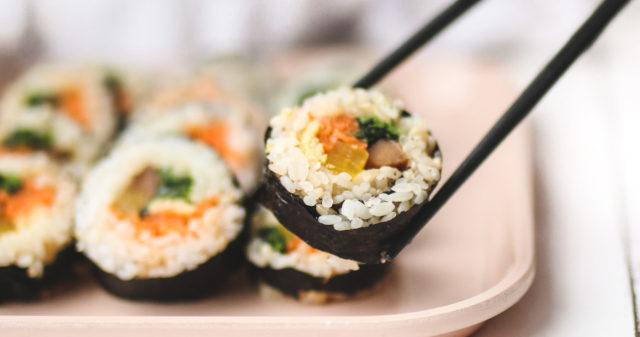Gimbap is a Korean dish made from cooked rice and other ingredients that are rolled in gim—dried sheets of nori seaweed—and served in bite-sized slices. The dish is often part of a packed meal, or dosirak, to be eaten at picnics and outdoor events, and can serve as a light lunch along with danmuji (yellow pickled radish) and kimchi. It is a popular take-out food in South Korea and abroad, and is known as a convenient food because of its portability. It is usually well wrapped (traditionally with aluminium foil, but now sometimes in paper) and does not have any liquid ingredients.
Gim refers to edible seaweed in the genus Porphyra and Pyropia. Bap broadly refers to "cooked rice". The compound term gimbap is a neologism; it was not a part of the Korean language until the modern era. A food with a similar concept, cooked rice wrapped in gim, was called bokssam in the Joseon era (1392–1897).
The term gimbap was used in a 1935 Korean newspaper article but at the time, the loanword norimaki was used as well. Norimaki, which borrowed from the name of a similar Japanese dish, was part of the Japanese vocabulary that entered into the Korean language during the Japanese occupation (1910–1945), when teaching and speaking Korean were prohibited. The two words were used interchangeably until gimbap was made the universal term as part of efforts to clear away the remnants of Japanese colonialism and purify the Korean language.

